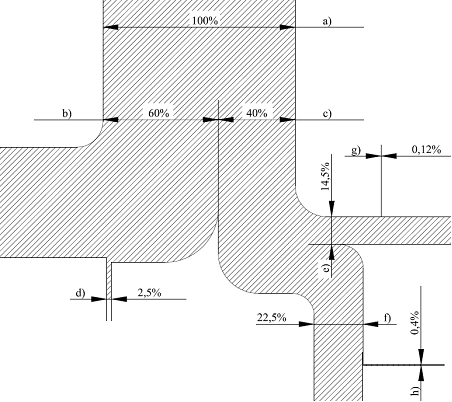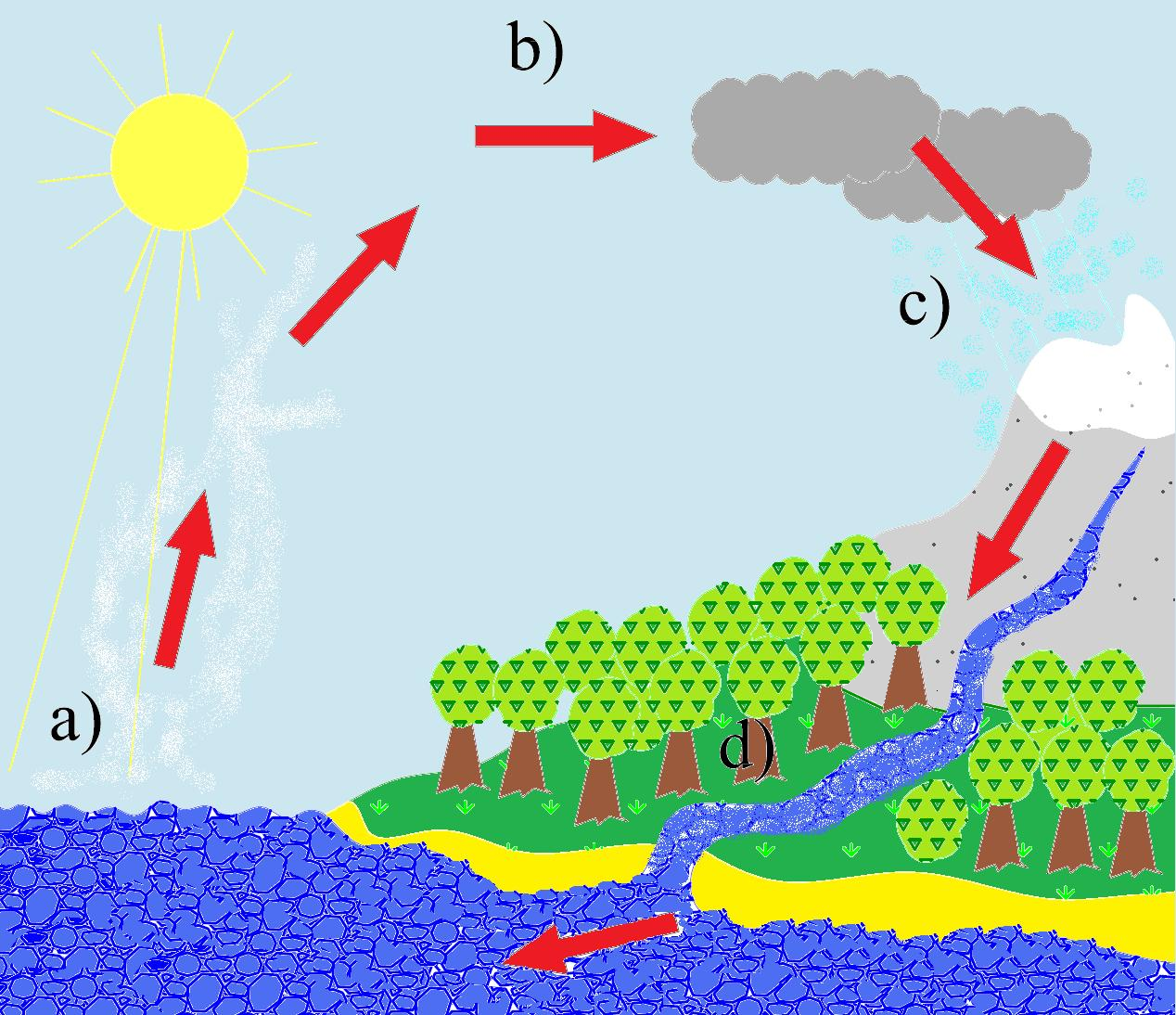
HYDRO POWER
From many centuries people used to use rivers to drive a watermills and many machines. It was the most simply energy conversion from the kinetic energy of water to the mechanical energy of machines for example to flour. Through this time the knowledge about water properties has developed. At present the hydrology is well known science. Rivers motion (kinetic and potential energy) in fact is energy of the Sun. From 100% of total coming energy, 60% is converted into atmosphere heating and 40% to the Earth heating. From that 40% of the Sun energy, 22,5% is converted into water heating and them 0,4% in converted into kinetic and potential energy of water. Below picture shows all of mentioned relations (Fig. 34). [40]

Due to heating the water circulate in environment. On the seas surface the water vaporizes and floats as a clouds. When the temperature falls down the steam condenses and falls on the surface as rain. That rain which falls in e.g. mountains comes into streams and from them to rivers. By the river the water comes back into the sea. That circulation is described by following figure (Fig. 45). [27]

The reviver consists of source, upper reaches, middle reaches, lower reaches and influx. The slope is major factor which describe a river utility for energy extracting (the difference between the highest water level – source – and the lowest – influx – calls total river slope). In the influx and lower reaches the slope is relatively low and there hydro power plants are construct in other method than in the middle and upper reaches. There are two types of a river influx: delta influx (only rivers which carry large amounts of sediment) or cone-shape influx. The slope in middle reaches may be higher than in the upper, however it is rare appearance. The flux is the second factor which describes how much energy is possible to obtain from each river. It describe amount of water which flow through the watercourse section during one second (the major unit of flux is m3/s). A river power describes the following expression: [27]

where: γ – volumetric weight [kg/m3] Q – flux [m3/s] H – slope [m]
The watercourse energy is described by following expression: [27]

where: Pwatercourse – the river power [kW] T – time of measurement [h]
The hydro generation as a wind generation is related with weather, especially with rains. The weather forecast helps to manage the water supplies. However hydro power plants production is more predictable than wind power plants and can operate without forecast or with wrong information about weather. In Europe 10% of total energy generated from renewable energy sources are produced from water power plants (70% in the EU-27). Potential penetration of small hydro power plants is from 14,5 to 18 GW in 2020 and from 16,5 to 19 GW in 2030. In case of large scale power plants the potential is much higher from 101 to 108 GW in 2020 and from104 to 112 GW in 2030. [9], [11], [27], [43]
-
Description of technology|
Economic aspects|
Environment and public awareness|
Legislation|
Final comparison|
References

